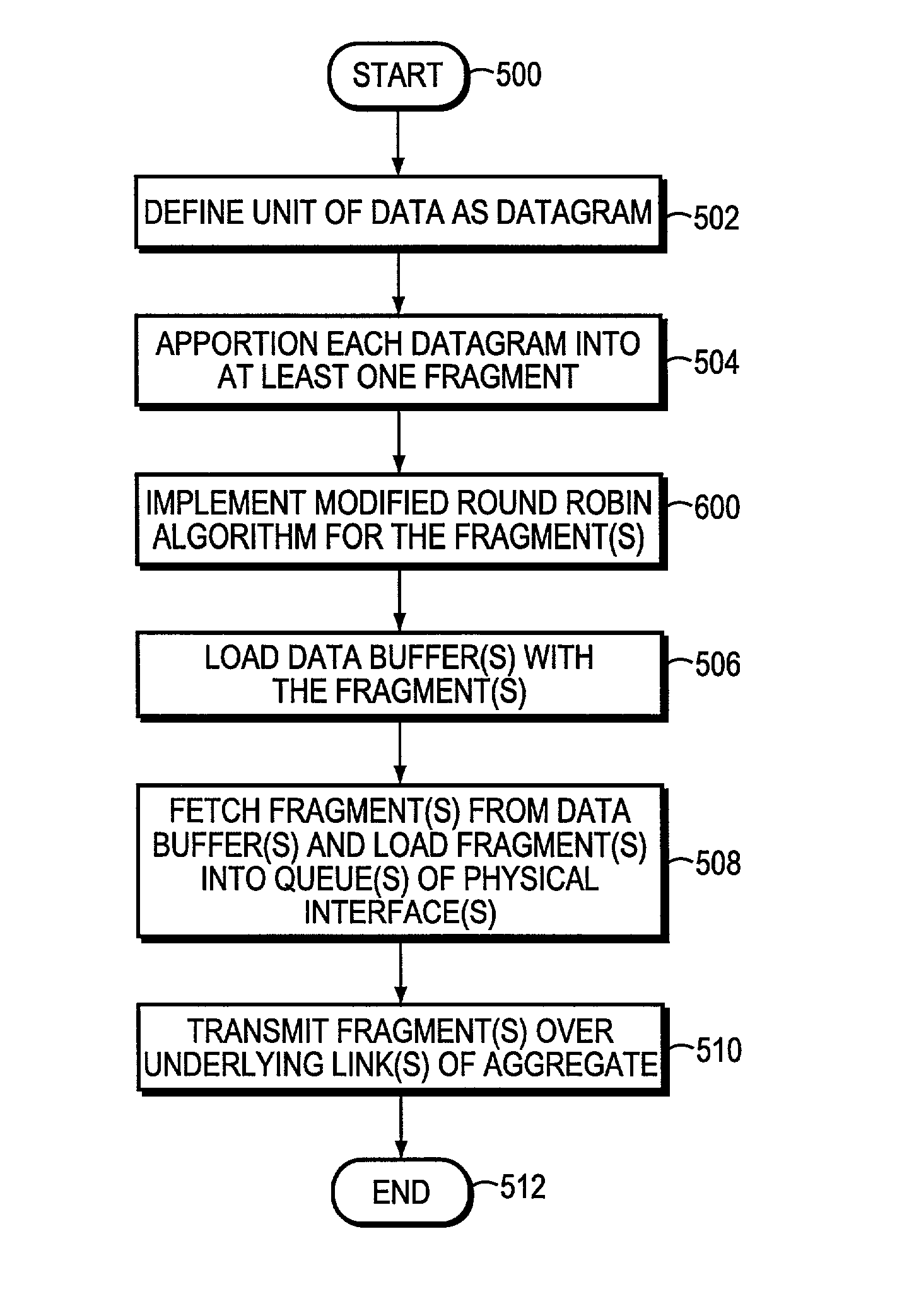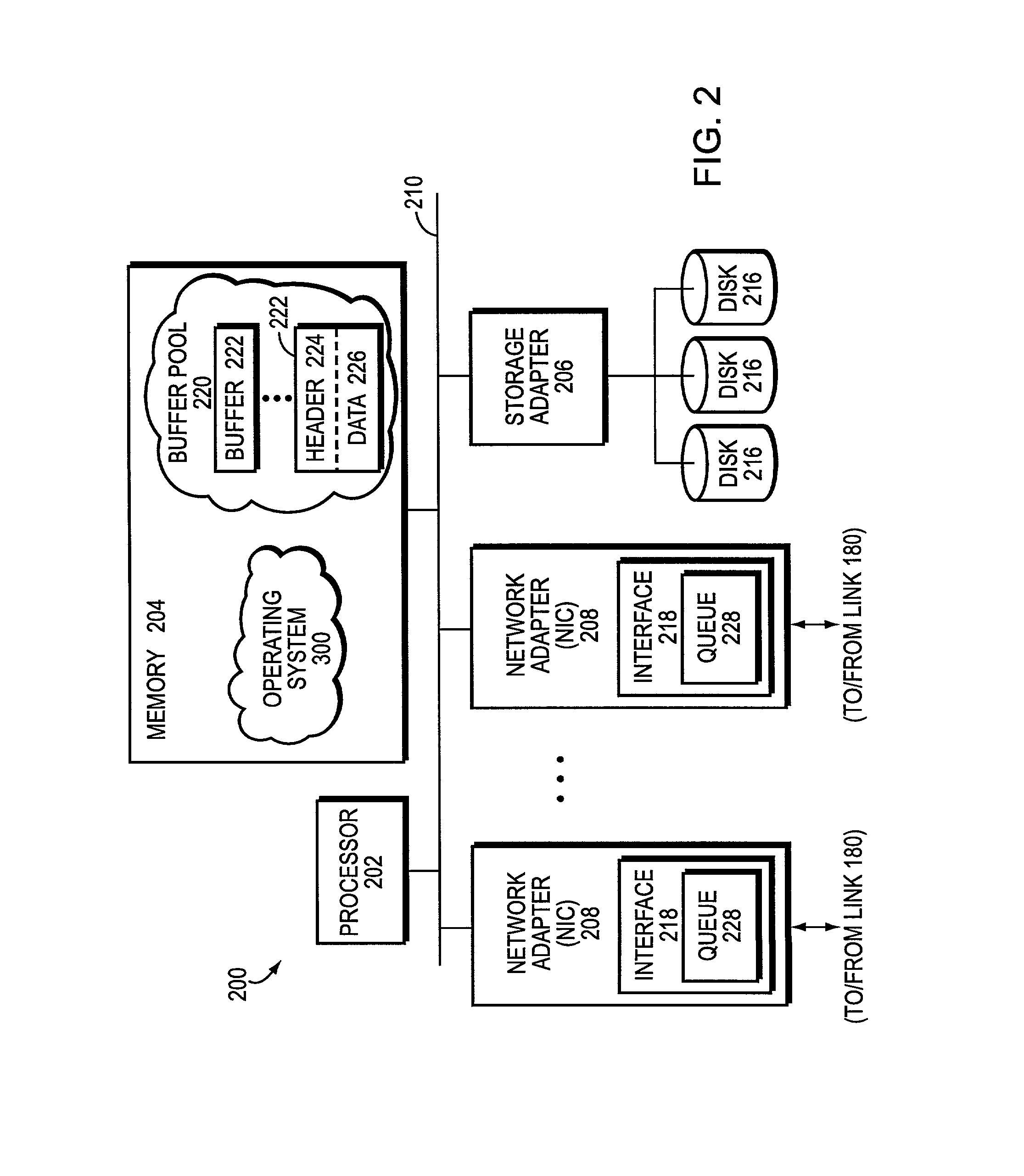Modified round robin load balancing technique based on IP identifier
a load balancing and round robin technology, applied in the field of physical link aggregation, can solve the problem of reducing the possibility of out-of-order packet delivery to a client, and achieve the effect of reducing the number of possible retransmissions and minimizing the reordering of ip fragments
- Summary
- Abstract
- Description
- Claims
- Application Information
AI Technical Summary
Benefits of technology
Problems solved by technology
Method used
Image
Examples
Embodiment Construction
[0021]FIG. 1 is a schematic block diagram of a computer network 100 including a plurality of clients 110 and a server 200 that may be advantageously used with the present invention. The server is a special-purpose computer preferably configured as a network storage appliance or filer 200 that provides file service relating to the organization of information on storage devices, such as disks. The client 110 may be a general-purpose computer configured to execute applications including file system protocols, such as the conventional network file system (NFS) protocol. Moreover, the client 110 may interact with the filer 200 in accordance with a client / server model of information delivery. That is, the client may request the services of the filer, and the filer may return the results of the services requested by the client, by exchanging packets 120 encapsulating, e.g., the NFS protocol format over the network 100. It will be understood to those skilled in the art that the inventive te...
PUM
 Login to View More
Login to View More Abstract
Description
Claims
Application Information
 Login to View More
Login to View More - R&D
- Intellectual Property
- Life Sciences
- Materials
- Tech Scout
- Unparalleled Data Quality
- Higher Quality Content
- 60% Fewer Hallucinations
Browse by: Latest US Patents, China's latest patents, Technical Efficacy Thesaurus, Application Domain, Technology Topic, Popular Technical Reports.
© 2025 PatSnap. All rights reserved.Legal|Privacy policy|Modern Slavery Act Transparency Statement|Sitemap|About US| Contact US: help@patsnap.com



